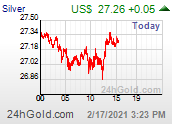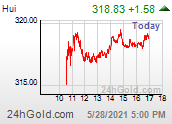Parks and Rec calls for volunteers at contaminated Superfund site
From Facebook:
From: Heron Pond Management Plan
See pages 6 and 23(map)
The Colorado Audubon Society and Denver Parks and Recreation are looking for volunteers to help at Heron Pond, located on 53rd Ave & Franklin St. on May 11, 2013 from 9:00 am – 1:00 pm. Please contact Tina Romero at 303.916.2694 if you are interested in participating.
From: Heron Pond Management Plan
Toxic Materials
 The old Globe smelter operated by ASARCO, Inc. is located a few hundred yards
The old Globe smelter operated by ASARCO, Inc. is located a few hundred yards west of Heron Pond immediately west of the intersection of 54th and Washington Streets
(Figure 2). The plant currently produces lithage (lead oxide), bismuth oxide, test lead,
and refines high-purity metals (Anonymous 1998a). The Globe Plant has been a
processing site for various heavy metals since the 1880’s (Anonymous 1998a). The
smelting operations left elevated levels of cadmium, lead, zinc, and arsenic in ground
water, surface water, sediments and soil at and near the plant (Anonymous 1998b). An
area around the Globe smelter, including all of the Heron Pond Natural Area, lies within
the Superfund site. The State of Colorado Department of Public Health and Environment
(CDPHE) has been the lead agency at this site.
Over many years, airborne and waterborne contaminants from the Globe smelter
site and other sources have contaminated Heron Pond with heavy metals. Sediment
samples from the pond contained detectable levels of arsenic, nickel, cadmium,
chromium, lead, mercury, silver, and copper (Kirsten King, pers. comm.). Water samples
from the pond contained detectable levels of arsenic, cadmium, lead, and borderline
detectable levels of mercury (Kirsten King, pers. comm.). However, these contaminants
are not thought to pose a threat to humans as long as the sediment remains on the bottom
of the pond and as long as people do not recreate in or on the pond or eat fish from the
pond. Representatives of ASARCO will have access to the pond to collect water and
sediment samples to monitor contaminants.
The Heron Pond expansion property (the upland area immediately west of Heron
Pond) consists of approximately 25 acres of deeded ground. This property has been
highly disturbed, and is dominated by alien weed species. In 1992, a hazardous materials
assessment was conducted on the Heron Pond expansion parcel and found that the soil
was contaminated with asbestos, arsenic, cadmium, lead, and zinc. The State of Colorado
and ASARCO reached a settlement in 1993 to clean up the site (Anonymous 1998b). In
1996, ASARCO remediated the site by removing the most contaminated soil. The rest of
the property was capped with twelve inches of soil. The cleanup was approved by
CDPHE.
Additional follow-up environmental sampling of the Heron Pond expansion
property was conducted in the fall and winter of 1998 and in the spring of 1999 to better
understand the environmental contaminants on the property. URS Operating Services,
Inc. conducted the sampling, under contract with the US Environmental Protection
Agency. This sampling was conducted because the proposed use of the Heron Pond
expansion property as a stormwater detention area could expose buried toxic materials to
the atmosphere or could result in stormwater leaching through the toxic materials, with
possible movement of toxic substances in ground water. The environmental sampling
discovered no buried drums or metal tanks, plus there was no evidence of ground water
contamination (Anonymous 1999). However, the sampling revealed the existence of
buried animal rendering wastes, petroleum-contaminated soils, and metal-contaminated
soils. The locations of these materials on the Heron Pond expansion property are shown
in Figure 4.
Discovery of the metal-contaminated soil motivated a second round of sampling
to determine if the contaminated soils could be left on-site and to better estimate disposal
costs. The report concluded that the metal-contaminated soil might meet the definition of
“hazardous material” and is therefore not be disturbed under any circumstances.
Environmental Services of the City and County of Denver recommended excavating the
petroleum-contaminated soil and disposing of it at a solid waste landfill. Other material
excavated to create the stormwater detention pond can be managed on-site, provided they
are covered with one foot of clean soil, subject to CDPHE approval (Anonymous 1999).
Denver Environmental Services suggested a modified perimeter for the stormwater
detention pond, as shown in Figure 4 that would avoid the metal-contaminated soil and
the animal rendering waste.
Great article on the history of the area.










0 comments:
Post a Comment